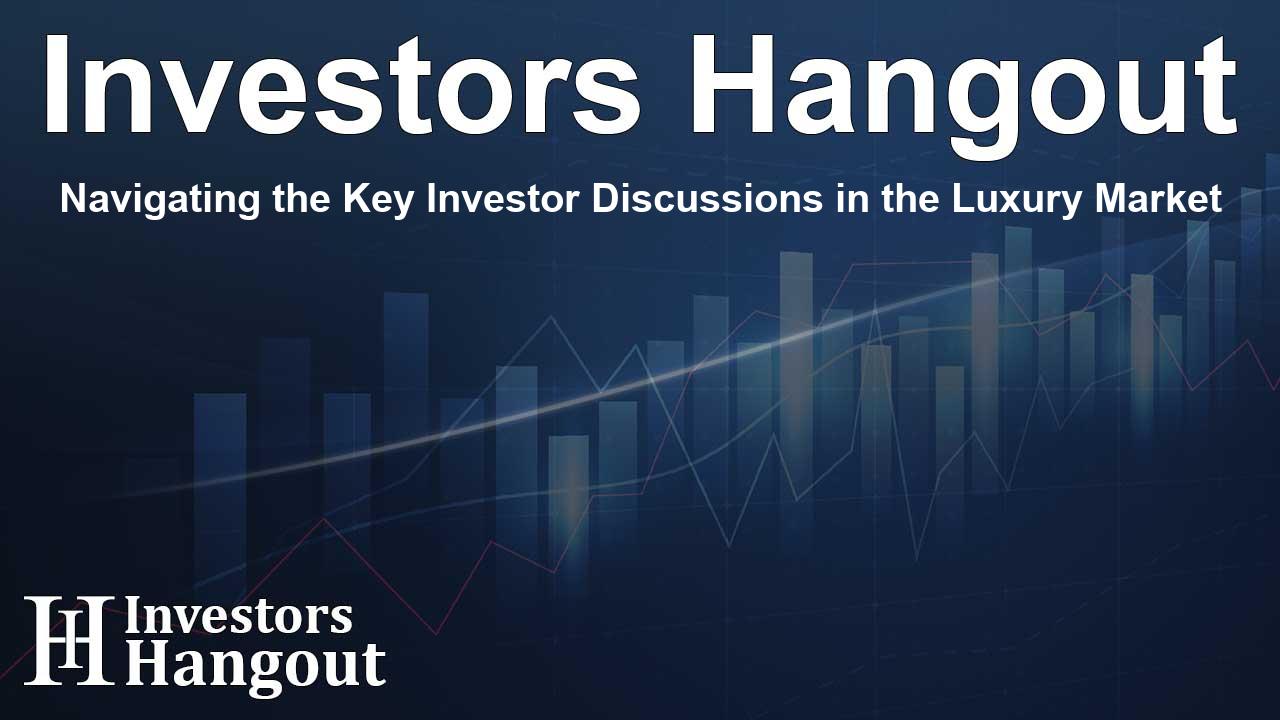Navigating the Key Investor Discussions in the Luxury Market

Understanding the Investor Debates in the Luxury Sector
The luxury sector stands at a pivotal crossroads, with investors engaged in essential discussions about its future trajectory. Following a period of remarkable growth shaped largely by consumer spending patterns and broader economic conditions, the sector's performance has prompted critical analysis from experts.
The Importance of the Chinese Market
For many years, Chinese consumers have been the backbone of luxury brand success. Notably, in 2019, they represented around 33% of sales across significant luxury brands, underscoring the necessity for investors to focus on this demographic.
However, the landscape has shifted post-pandemic. The demand from Chinese buyers, which had been robust, has shown signs of weakening both at home and in international markets. Recent reports suggest that LVMH's growth in the Fashion and Leather Goods division dropped from 9% in early periods to just 6% as the year progressed.
Potential Structural Changes in Demand
This decline has sparked debate among investors regarding whether there is a lasting change in Chinese demand. Some believe that China’s economic challenges, including an aging population and reduced spending power driven by negative wealth effects, could diminish the luxury market in the long term. Others remain hopeful, arguing that as economic conditions improve, Chinese consumers will increase their luxury purchases fueled by high savings and the desire for social status.
The Evolution of Pricing Strategies
Another core topic is the evolving pricing strategy within the luxury market. Rising costs for entry-level luxury goods risk sidelining a critical segment of consumers who aspire to own luxury products. The challenge for brands is how to balance pricing while ensuring that they don't alienate potential buyers.
Market Dynamics and Consumer Alienation
Concerns are growing that the luxury market might narrow to cater only to affluent clients. On the other hand, some speculate that brands will pivot back to offer more affordable options to attract aspirational buyers. The future of pricing strategies becomes critical, especially as the anticipated shifts in market mix could present challenges for companies aiming to maintain their market positions.
The Unusual Decoupling of Wealth and Luxury Spending
In the United States, a surprising trend has emerged: an unusual disconnect between household wealth and luxury spending. Historically, increases in wealth correlated closely with luxury purchases. However, the latest data indicates that despite a rise in household net worth, luxury spending has remained stagnant.
While optimists believe that spending will eventually recover as wealth effects materialize, skeptics caution that the luxury market's recovery may take longer due to wealth concentration among older demographics, with younger consumers lagging behind.
Post-Pandemic Market Adjustments
The luxury sector has undeniably experienced a post-pandemic boom, with an impressive average growth rate of 11.5% CAGR from 2019 to 2023. Yet, this surge has raised questions about whether the industry is entering a 'digestion phase,' expected to last one to three years, as consumers reassess their luxury spending behavior.
Future Outlook and Margin Concerns
Within this context, investors ponder the sustainability of growth in the luxury sector. Brands such as Hermès and LVMH have enjoyed significant margin expansions post-pandemic, yet inflationary pressures and increasing operational costs could lead to margin compression. With growth projections now moderating toward low-single-digit percentages, investors face pressures to adjust their expectations in a potentially overheating market.
Frequently Asked Questions
What are the main issues currently debated among luxury sector investors?
Key issues include the slowdown of Chinese consumer demand, pricing strategies that may alienate aspirational buyers, and the disconnect between household wealth and luxury spending.
How has the Chinese market influenced luxury brand growth?
Historically, Chinese consumers have significantly driven growth, accounting for about 33% of luxury sales. Their changing spending habits are now a subject of concern for investors.
What does the 'digestion phase' mean for the luxury market?
The 'digestion phase' refers to a period where the luxury sector recalibrates after rapid growth, leading to slower growth rates as consumer spending adjusts.
How are luxury brands responding to rising prices?
Brands are exploring options for entry-level products to attract aspirational consumers while balancing the need to maintain profitability amidst cost increases.
What are investors concerned about regarding luxury market valuations?
Investors worry about potential derating as growth projections decrease, which may lead to a reassessment of the historically high multiples that luxury brands have commanded.
About Investors Hangout
Investors Hangout is a leading online stock forum for financial discussion and learning, offering a wide range of free tools and resources. It draws in traders of all levels, who exchange market knowledge, investigate trading tactics, and keep an eye on industry developments in real time. Featuring financial articles, stock message boards, quotes, charts, company profiles, and live news updates. Through cooperative learning and a wealth of informational resources, it helps users from novices creating their first portfolios to experts honing their techniques. Join Investors Hangout today: https://investorshangout.com/
Disclaimer: The content of this article is solely for general informational purposes only; it does not represent legal, financial, or investment advice. Investors Hangout does not offer financial advice; the author is not a licensed financial advisor. Consult a qualified advisor before making any financial or investment decisions based on this article. The author's interpretation of publicly available data shapes the opinions presented here; as a result, they should not be taken as advice to purchase, sell, or hold any securities mentioned or any other investments. The author does not guarantee the accuracy, completeness, or timeliness of any material, providing it "as is." Information and market conditions may change; past performance is not indicative of future outcomes. If any of the material offered here is inaccurate, please contact us for corrections.